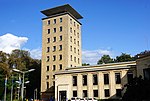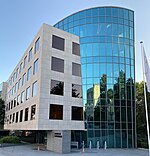Eurovision Song Contest 1962

The Eurovision Song Contest 1962 was the 7th edition of the annual Eurovision Song Contest. It took place in Luxembourg City, Luxembourg, following the country's victory at the 1961 contest with the song "Nous les amoureux" by Jean-Claude Pascal. The contest was organised by the European Broadcasting Union (EBU) and host broadcaster Compagnie Luxembourgeoise de Télédiffusion (CLT), and was held at the Villa Louvigny on Sunday 18 March 1962 hosted by the Luxembourgish speaker Mireille Delannoy. This remains the last time that the final of the contest was not held on a Saturday, as since 1963 the final of the contest has consistently been held on a Saturday evening. Sixteen countries participated in the contest – the same that took part the year before. The winner was France with the song "Un premier amour", performed by Isabelle Aubret, written by Roland Valade and composed by Claude Henri Vic. This was France's third victory in the contest in just five years, having also won in 1958 and 1960. It was also the third consecutive winning song performed in French. For the first time in the contest's history, Austria, Belgium, Netherlands and Spain all scored nul points.
Excerpt from the Wikipedia article Eurovision Song Contest 1962 (License: CC BY-SA 3.0, Authors, Images).Eurovision Song Contest 1962
Avenue Émile Reuter, Luxembourg Ville-Haute
Geographical coordinates (GPS) Address Nearby Places Show on map
Geographical coordinates (GPS)
| Latitude | Longitude |
|---|---|
| N 49.611388888889 ° | E 6.1225 ° |
Address
Fort Louvigny
Avenue Émile Reuter
2420 Luxembourg, Ville-Haute
Luxembourg
Open on Google Maps










